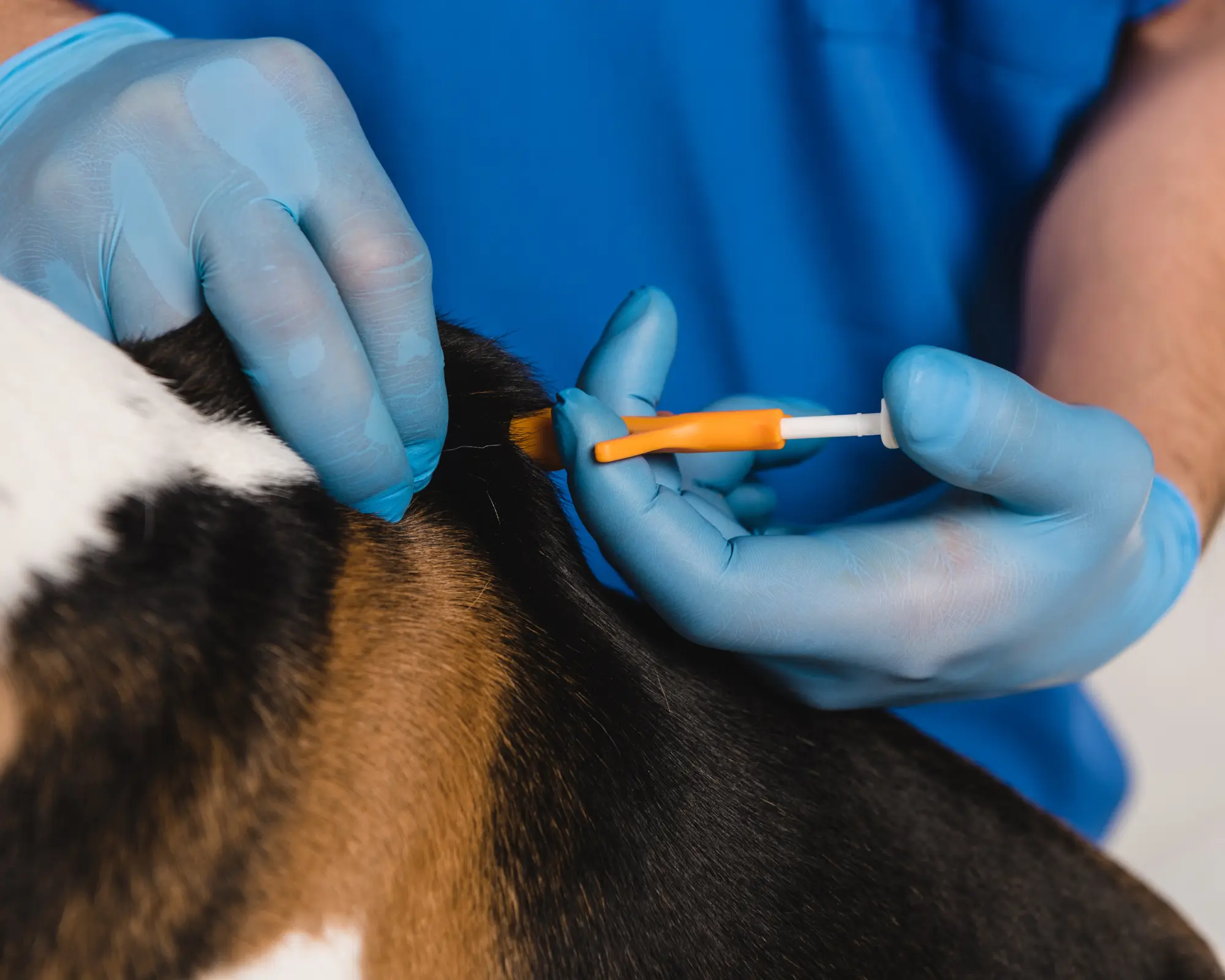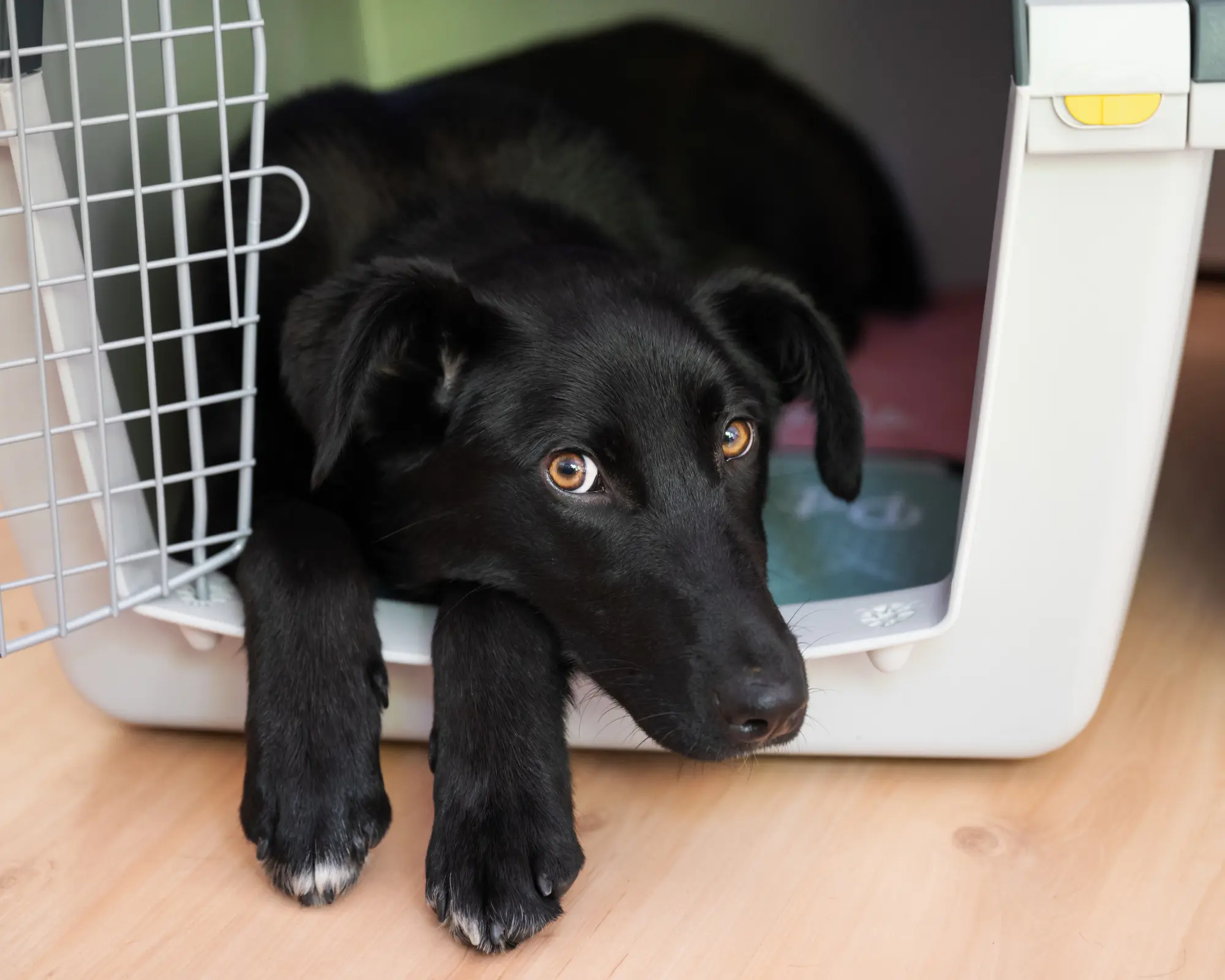Overview
From Aug 1, 2024 import requirements for bringing pet dogs and cats to the United States are being revised. The biggest changes are implemented for dogs and requirements differ depending on two major factors: if your dog has been to a high-risk rabies country within 6 months of entry to the United States, and whether the current rabies vaccination was administered in the US or overseas.
Different documentation and clinical preparations will be needed. The best way to check for your particular case is to read this article below, or to visit the CDC website and launch their Dog Bot.
Everything you need to know before bringing pet dogs and cats to the United States
When bringing pet dogs and cats to the United States from another country it’s important to know that the pet needs to meet both Federal and State requirements.
Therefore, it’s important to read and understand ALL import regulations by APHIS and other Federal agencies (such as the U.S. Fish and Wildlife Service and Centers for Disease Control and Prevention), as well as your destination State.
Although both cats and dogs are subject to inspection at ports of entry, the import requirements largely vary between cats and dogs. If you plan to bring your cat to the United States, then you can skip ahead here.
Bringing pet dogs to the United States: Updated import requirements

From August 1, 2024 the US import requirements for dogs are changing. Read on to make sure you are up-to-date and your doggo is meeting the new requirements for your upcoming trip to the US.
Why is the CDC updating the regulations on pet importation?
According to the US Centers for Disease Control (CDC), the main reason for the recent update in pet import requirements is to prevent the reintroduction of dog rabies into the United States.
The fact that more than 100 countries worldwide are not yet efficiently controlling dog rabies poses a threat to the public health in the US, particularly when it comes to fraudulent documentation linked to international dog importation.
In 2007, the United States successfully eliminated dog rabies domestically. By standardizing the dog importation process in regards to minimum age, microchip, and documentation, the CDC strives to render the importation process safer and and more efficient for dogs into the US.
How are the new import requirements determined?
There are three major determining factors when it comes to the import requirements for dogs to the United States:
- Date of importation to the United States
- Which country your dog has been to in the six months before entering the United States
- In which country the current rabies vaccination was given (if required)
To understand how these factors will impact your travel plans, and make sure your fur baby is meeting all the requirements, either get in touch with a professional pet mover or check out the CDC website.
In this article we will walk you through the import requirements that apply starting from August 1, 2024. In case you plan to move to the US with your dog before August 1, 2024, please get in touch with our team directly for help and advice.
Introduction to the United States

When discussing the largest countries on Earth, the United States of America comes to mind for most people, besides Russia and China. Given its large size, the culturally diverse country can’t be underestimated. With its massive territory stretching approximately 4,506 km from the East to the West, and 2,650 km from the North to the South, the U.S ranks as the fourth largest country in the world.
Bordered by the Pacific and Atlantic Oceans, the country has diverse climate zones, ranging from dry and tropical to temperate, continental, and polar. This geographical diversity gives tourists an insane variety of experiences – from dipping your toes in 6-mile of beaches, with Hawaii standing out as the most desired destination, to exploring a great number of natural wonders and picturesque sightseeing in every state.
Due to varied climate zones, the U.S is home to 17,000 native plant species, 700 bird species, 400 mammal species, 90,000 documented insect species, and 500 aquatic reptile and terrestrial species. Let’s not forget about the number of world-famous national parks with jaw-dropping landscapes that you can’t easily find elsewhere, such as the Grand Canyon National Park, the Yosemite Park, the Olympic National Park, and the Yellowstone National Park, to name a few.
For pawrents, the U.S. comes with abundant pet-friendly public settings where they can enjoy outing with their fluffballs. Whether strolling in green spaces or relaxing at coffee shops, pawrents are not limited to the wide choices each state has to offer specifically for animal lovers and their beloved pets. Some pet-friendly destinations across the U.S worth checking out includes:
- Austin (Texas)
- San Diego (California)
- Colorado Springs (Colorado)
- Fort Myers (Florida)
- Lake Placid (New York)
- Salt Lake City (Utah)
- Chicago (Illinois)
- South Lake Tahoe Resort (California)
Bringing pet dogs to the United States: General eligibility
No matter what country your pet is from, they need to meet certain criteria to be eligible for import to the United States.
If your dog doesn’t meet all entry requirements, or if there is any inconsistency in the import documentation, your pet will be rejected entry into the United States and sent back to the country of departure at your own expense.
Age limit
Pets need to be at least 6 months old at the time they arrive in the United States.
Microchip

When bringing pet dogs to the United States, they must have a microchip for identification. This is the only approved form of identification, which is essential for your pet’s travel preparation.
A microchip allows your veterinarian to identify your pet by scanning the microchip with an ISO compatible microchip reader.
The microchip must be implanted before any mandatory rabies vaccination. The veterinarian must scan the microchip before every vaccination and blood test and make sure the number is correctly noted on all required forms and in all accompanying veterinary records.
Approved microchips are either 10 or 15 digits long, and they do NOT start with 999.
CDC dog import form
The dog import form needs to be filled out online. The CDC recommends that it’s being done 2-10 days before your dog’s arrival into the United States. However, it can be done anytime up to immediately before the arrival.
In case of any changes to your application, a new form needs to be submitted online. Make sure to note that the purpose of the new submission is to change or update a previous application.
You can access the form here.
You will need to know the following information before you start filling out the form:
- Information about the person bringing the dog to the United States
- Full name, status (owner, shipper, travel parent or other), Date of birth, and ID(1 of the 3 below):
- Passport number
- Driver’s license details
- Air WayBill or Bill lading number
- Full name, status (owner, shipper, travel parent or other), Date of birth, and ID(1 of the 3 below):
- Email address and phone number of the applicant
- Animal information
- Animal name
- Age (years and months)
- Sex and whether intact or neutered
- Breed
- Color and markings
- Importation reason (select 1):
- Personal pet (incl. Emotional support animals)
- Commercial (rescue, resale, adoption or other commercial purpose)
- Service animal
- Government-owned animal
- Education, exhibition, or research
- Travel Information
- Travel type (Air, sea, land)
- Country of departure
- Date of arrival
Additional information required if your dog has been to a high-risk dog rabies country within the past 6 months leading up to the entry into the United States.
- Physical address where the dog will be staying in the US
- Purpose of the importation
- Photo of your dog (see example below)
- Showing the face and body
- File size 1 mb max
- .jpg, .jpeg, or .png image type
- For dogs over 1 years old, photo taken no more than 90 days before travel
- For dogs under 1 year of age, photo taken no more than 15 days before travel
- Microchip number (only numbers with 15 digits allowed)
- Travel details
(this section will vary depending on if your dog has either a current and valid Certification of U.S.-issued Rabies Vaccination form OR a USDA-endorsed export health certificate)
Other information to provide in this section (will vary based on your replies above):
- Country of departure
- Select all countries you dog has been to in the past 6 months (drop-down list)
- Travel mode (air, sea or land)
- Arrival date
- Port of entry
- Carrier and flight number (air) / Vessel name (sea) / License plate State and number (land)
- Your dog’s travel mode (cargo, checked-baggage or hand-carried)
- Does your dog have a current and valid CDC Foreign Rabies Vaccination and Microchip Certification form issued outside the United States?
Attention! If you reply no to the latest question, your dog is not eligible for entry into the US.

At the end of the form you will need to electronically sign to acknowledge and accept the Terms of Acceptance.
A receipt will be sent to you by email after you’ve submitted the form. You will need to show this receipt to both the airline before boarding, and to the U.S. Customs and Border Protection when the dog arrives in the United States.
If you’ve appointed a professional pet relocation agent to import your dog to the US they may fill out this form in your place.
Veterinary inspection at entry
All dogs are subject to an inspection at the port of entry. At the time of the inspection, your dog must appear healthy and show no evidence of an infectious disease that can be transmitted to humans.
Should there be suspicion of your dog being ill, further examination by a licensed veterinarian at your own expense might be required before your dog is granted entry to the US.
In addition, your dog must arrive accompanied by all the additional documentation required by the CDC and varying depending on your dog’s residence in the past 6 months, and where its current rabies vaccination was administered. More information about the additional documentation follows below.
Bringing pet dogs to the United States: Additional documentation

The documentation required will depend on where your dog received its current rabies vaccination, and where it has been spending time in the six months leading up to the departure for the US.
In the sections below you’ll find information for the different scenarios:
Past 6 months residence/visits |
Rabies vaccination |
|
| 1 | Only rabies-free or low-risk countries | US vaccination or non-US Vaccination |
| 2 | High-risk rabies country | US vaccination |
| 3 | High-risk rabies country | Non-US vaccination |
If your dog is not vaccinated against rabies and has been in a high-risk rabies country in the past six months, it is NOT eligible for entry into the US.
By US vaccination, we mean that you hold a certification of U.S.-Issued Rabies Vaccination form or a USDA-endorsed export health certificate. You can check if the countries your dog has visited and resided in in the past 6 months are high-risk rabies countries in the list below (alphabetical order):
High-risk rabies countries
Afghanistan
Algeria
Angola
Armenia
Azerbaijan
Bangladesh
Belarus
Belize
Benin
Bolivia
Botswana
Brazil
Burkina Faso
Burundi
Cambodia
Cameroon
Central African Republic
Ceuta
Chad
China (excluding Hong Kong, Macau, and Taiwan)
Colombia
Comoros
Côte d’Ivoire (Ivory Coast)
Cuba
Democratic Republic of the Congo
Djibouti
Dominican Republic
Ecuador
Egypt
El Salvador
Equatorial Guinea
Eritrea
Eswatini (Swaziland)
Ethiopia
Gabon
Gambia
Georgia
Ghana
Guatemala
Guinea
Guinea-Bissau
Guyana
Haiti
Honduras
India
Indonesia
Iran
Iraq
Israel (including the West Bank and Gaza)
Jordan
Kazakhstan
Kenya
Kuwait
Kyrgyzstan
Laos
Lebanon
Lesotho
Liberia
Libya
Madagascar
Malawi
Malaysia
Mali
Mauritania
Melilla
Moldova
Mongolia
Morocco
Mozambique
Myanmar (Burma)
Namibia
Nepal
Niger
Nigeria
North Korea
Oman
Pakistan
Peru
Philippines
Qatar
Republic of the Congo
Russia
Rwanda
São Tomé and Príncipe
Saudi Arabia
Senegal
Sierra Leone
Somalia
South Africa
South Sudan
Sri Lanka
Sudan
Suriname
Syria
Tajikistan
Tanzania (Including Zanzibar)
Thailand
Timor-Leste
Togo
Tunisia
Turkey
Turkmenistan
Uganda
Ukraine
United Arab Emirates
Uzbekistan
Venezuela
Vietnam
Western Sahara
Yemen
Zambia
Zimbabwe
Additional documentation for dogs whose rabies vaccination was administered in the US and that has been to high-risk rabies countries in the past 6 months
If this case applies to you and your dog, you will need to provide two additional documents to meet the import requirements for bringing a dog to the United States.
CDC Dog Import Form receipt
The dog import form needs to be filled out online by the person importing the dog to the US. The CDC recommends that it’s being done 2-10 days before your dog’s arrival into the United States. However, it can be done anytime up to immediately before the arrival.
In case of any changes to your application, a new form needs to be submitted online. Make sure to note that the purpose of the new submission is to change or update a previous application.
You can access the form here.
You will need to know the following information before you start filling out the form:
-
- Information about the person bringing the dog to the United States
- Full name, status (owner, shipper, travel parent or other), Date of birth, and ID(1 of the 3 below):
- Passport number
- Driver’s license details
- Air WayBill or Bill lading number
- Full name, status (owner, shipper, travel parent or other), Date of birth, and ID(1 of the 3 below):
- Email address and phone number of the applicant
- Animal information
- Animal name
- Age (years and months)
- Sex and whether intact or neutered
- Breed
- Color and markings
- Importation reason (select 1):
- Personal pet (incl. Emotional support animals)
- Commercial (rescue, resale, adoption or other commercial purpose)
- Service animal
- Government-owned animal
- Education, exhibition, or research
- Travel Information
- Travel type (Air, sea, land)
- Country of departure
- Date of arrival
- Information about the person bringing the dog to the United States
Additional information required if your dog has been to a high-risk dog rabies country within the past 6 months leading up to the entry into the United States.
- Physical address where the dog will be staying in the US
- Purpose of the importation
- Photo of your dog (see example below)
- Showing the face and body
- File size 1 mb max
- .jpg, .jpeg, or .png image type
- For dogs over 1 years old, photo taken no more than 90 days before travel
- For dogs under 1 year of age, photo taken no more than 15 days before travel
- Microchip number (only numbers with 15 digits allowed)
- Travel details
(this section will vary depending on if your dog has either a current and valid Certification of U.S.-issued Rabies Vaccination form OR a USDA-endorsed export health certificate)
Other information to provide in this section (will vary based on your replies above):
- Country of departure
- Select all countries you dog has been to in the past 6 months (drop-down list)
- Travel mode (air, sea or land)
- Arrival date
- Port of entry
- Carrier and flight number (air) / Vessel name (sea) / License plate State and number (land)
- Your dog’s travel mode (cargo, checked-baggage or hand-carried)
- Does your dog have a current and valid CDC Foreign Rabies Vaccination and Microchip Certification form issued outside the United States?
Attention! If you reply no to the latest question, your dog is not eligible for entry into the US.

At the end of the form you will need to electronically sign to acknowledge and accept the Terms of Acceptance.
A receipt will be sent to you by email after you’ve submitted the form. You will need to show this receipt to both the airline before boarding, and to the U.S. Customs and Border Protection when the dog arrives in the United States.
If you’ve appointed a professional pet relocation agent to import your dog to the US they may fill out this form in your place.
Certification of U.S.-issued Rabies Vaccination form or USDA-endorsed export health certificate
If your dog was inoculated with dog rabies vaccination in the US before leaving to another country, a USDA accredited veterinarian can issue a Certification of U.S.-issued Rabies Vaccination before you leave the US.
The form is available together with instructions on the Veterinary Export Health Certification System (VEHCS) Help Page.
Both 1-year and 3-years vaccinations are accepted, as long as the vaccination has not expired before your dog re-enters the US.
For one year (August 1, 2024 until July 31, 2025) the Certification of U.S.-issued Rabies Vaccination form can be replaced by an export health certificate endorsed by the U.S. Department of Agriculture (USDA).
The USDA-endorsed export health certificate must be issued by a USDA-accredited veterinarian before July 31, 2025, and document the dog’s age (at least 6 months), microchip number, and valid rabies vaccination administered in the United States.
Additional documentation for dogs whose rabies vaccination was administered in the US and that has not been to high-risk rabies country in the past 6 months
If your dog has only been visiting and living in low-risk or rabies free countries during the six months before departure to the US, you will need to provide two additional documents to meet the US import requirements.
CDC Dog Import Form receipt
The dog import form needs to be filled out online by the person importing the dog to the US. The CDC recommends that it’s being done 2-10 days before your dog’s arrival into the United States. However, it can be done anytime up to immediately before the arrival.
You can access the form and find more information about how to fill out the form here.
Certification of U.S.-issued Rabies Vaccination form or USDA-endorsed export health certificate
For dogs who have a current rabies vaccination administered in the US upon re-entry to the US, a USDA accredited veterinarian can issue a Certification of U.S.-issued Rabies Vaccination. The form should be issued before your departure from the US.
Your veterinarian can access the form and instructions on how to fill it out on the Veterinary Export Health Certification System (VEHCS) Help Page.
The US rabies vaccination certificate can be replaced by a USDA-endorsed export health certificate issued by a USDA-accredited veterinarian until July 31st, 2025
The export health certificate must show the dog’s age (6 months or older) and microchip number and either show that the dog has a current rabies vaccination administered in the US and is not expired on the date of return.
Both 1-year and 3-years vaccinations are accepted, as long as the vaccination has not expired before your dog re-enters the US.
Additional documentation for dogs whose rabies vaccination was not administered in the US and that has been to high-risk rabies country in the past 6 months
Dogs that have been vaccinated against rabies outside of the US must arrive along with a Certification of Foreign Rabies Vaccination and Microchip form including a valid rabies serology titer report, OR if not included on the form, a valid Rabies Neutralizing Anti-body Titer Test (RNATT) from a CDC-approved laboratory or they will be subject to a minimum of 28 days quarantine upon arrival.
When importing a dog from a high-risk rabies country without a US-administered rabies vaccination you will need to provide the following additional documentation:
CDC Dog Import Form receipt
The dog import form needs to be filled out online by the person importing the dog to the US. The CDC recommends that it’s being done 2-10 days before your dog’s arrival into the United States. However, it can be done anytime up to immediately before the arrival.
A receipt will be sent to you by email after you’ve submitted the form. You will need to show this receipt to both the airline before boarding, and to the U.S. Customs and Border Protection when the dog arrives in the United States.
If you’ve appointed a professional pet relocation agent to import your dog to the US they may fill out this form in your place.
Certification of Foreign Rabies Vaccination and Microchip form
The certification of foreign rabies vaccination and microchip form can be downloaded, or filled out directly online here.
It has to be filled out by an authorized veterinarian in the departure country and endorsed by the government veterinarian within 30 days of travel into the United States.
Confirmation of reservation at CDC-registered Animal Care Facility
Your dog needs to enter the United States through an airport with a CDC-registered Animal Care Facility. There are currently six such airports;
- Atlanta, Georgia (ATL)
- Los Angeles, California (LAX)
- Miami, Florida (MIA)
- New York, New York (JFK)
- Washington, DC (IAD)
- Philadelphia, Pennsylvania (PHL)

You will need to contact your arrival airport to schedule an exam and revaccination for rabies upon arrival (see contact details for each airport here).
And in case your dog doesn’t travel with a valid RNATT result, you will also have to book a quarantine for 28 days.
Valid Rabies Neutralizing Antibody Titer Test (RNATT) result
The rabies serology titer test has to be performed by a CDC-approved laboratory and the result should be ≥0.5 IU/mL for it to be considered passing or adequate by the CDC.
The blood for the titer test should be drawn at the earliest 30 days after a dog has had its first vaccination, or in case of vaccination booster, at any time. Note that it’s recommended to wait 30 days after a vaccination booster for better results.
The blood can’t be drawn closer than 28 days before arrival to the US.
The validity of the test result is for life as long as you keep your dog’s vaccinations up-to-date and without lapse.
A list of approved laboratories can be found on the CDC website.
Documentation for dogs that have not been to any high-risk rabies country in the past 6 months
If this case applies to you and your dog, you have three options when it comes to the additional documents required to import your dog to the United States.
Bringing pet cats to the United States

In comparison with dogs, import requirements for cats coming to the United States are largely looser.
Cats are neither required to have a microchip implanted nor any vaccinations at the time of entry to the United States. However, we highly recommend you get your cat both microchipped and vaccinated against rabies and the annual feline vaccination before traveling.
Depending on the country you are departing from and the airline you’re flying with a health certificate may be required. And even if this is not your case, getting your cat examined by a professional veterinarian pre-flight is highly recommended for its safety. It will also help you make sure your cat doesn’t show any signs of infectious diseases.
All cats entering the United States are subject to a mandatory inspection at ports of entry. Should your cat show any sign of illness, it may be required to undergo further examination by a licensed veterinarian at your expense, and in case there is evidence of an infectious disease that can be transmitted to humans, your cat will be denied entry into the United States.
Bringing pets to the United States: State specific requirements
In this article we have outlined the general and specific import requirements for cats and dogs based on their country of origin, age, and clinical preparation. The information is reviewing the latest updates from the CDC and APHIS.
However, the import of cats and dogs to the United States is also regulated on a State specific level. This case is particularly important when you plan to bring a pet to either Hawaii or Guam, but before you make travel arrangements for you and your pet to the US. Make sure to check in with a professional pet mover and read up on the latest updates on your State, the CDC and APHIS websites to avoid any unpleasant surprises.
And for Hawaii you can check out our State specific destinations guide here.
Bringing pet dogs and cats to the United States: How do Purrfect Pilots work and how can we help you
As an experienced pet moving agent specializing in international relocation, we are familiar with the full process of bringing pet dogs and cats to the United States, following the latest pet travel regulations. Our job is to ensure that your pet has the most comfortable transition possible during their journey and to give you regular updates about your pet throughout the move.
To take off some of the financial burden of bringing your pet to the U.S., we can offer tailored payment plans. Ask your Purrfect Pilot about available options.
During our years of operations, we have built a wide network of professional pet care professionals with the same commitment and passion as we have.
Your pet will only be handled by carefully selected partners where our team can not be present. Our partners are professionally trained in handling live animals according to the IATA live animal regulations and meet Purrfect Pilots’ strict partner requirements.
We offer full transparency from pricing to execution of your pet move and we are great at planning perfect moves.
But to be honest, our biggest strength lies in our industry knowledge and ability to “fix things” when needed. Because moving a pet can become quite the adventure and we always work with a B and a C backup plan to get your pet to destination.
Few pet moves are one-size-fits-all, at Purrfect Pilots we want to listen to your expectations and preferences, and support you in the way you need and want us to.
Purrfect Pilots is a dependable pet mover that helps relocate and travel pets to many countries, including those countries with strict import regulations like the U.S. and Australia. Are you looking to bring your pets to the U.S.? We can help you reunite with your pet.





